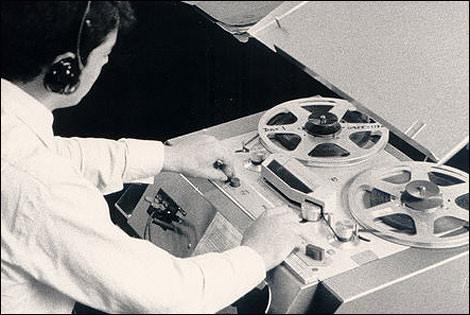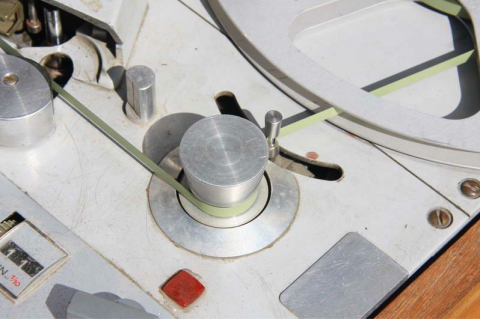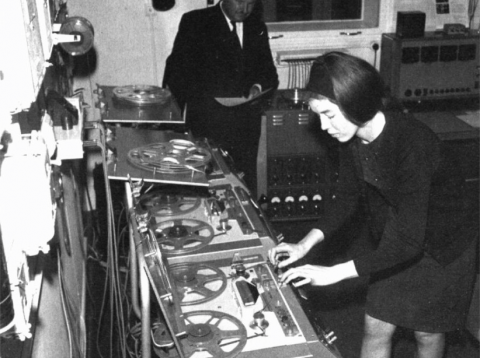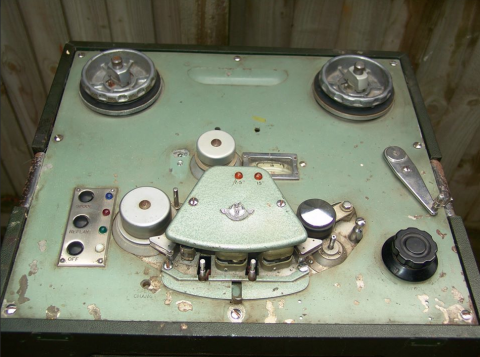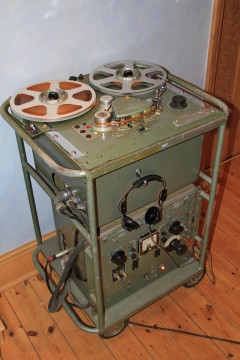I really enjoyed my time working in a regional centre. I spent a lot of time working in the Control Room, where the Technical Operations staff also did recording and tape editing as part of their duties. Of course, my training in the London XP unit helped here, and I had a good working relationship with many radio producers. I also did Continuity work on the Welsh Home Service, opting out of the BBC Home Service from London. This was my favourite duty, alongside announcers, and with some announcements and programmes in Welsh. (They didn’t separate to Radio Cymru until years later.)
One event which nearly brought an end to my career more certainly than the incident in the lift was my ability to oversleep. I woke up one morning at two minutes to seven a.m. I should have been on duty at 6-30 in Continuity, and the first programme was “Programme Parade” at 0710 am, which was on tape. There would be no other operator in the Control Room. I was the only person to start the tape, and I knew that if I didn’t, I was in serious trouble, or even dismissal. At the time I was in bed and breakfast at 100 Colum Road Cardiff; below is a map showing the distance to the BBC studios at Park Place. We normally had a taxi for early morning duty, but he had long since given up and gone. So I had to get the 878 yards to Continuity on my own in a little less that 15 minutes! Half a mile. I threw on a pair of shorts, a casual shirt and a pair of sandals, and just ran.
Well. I made it. I don’t know how I did it; at school, on sports day I was always hopeless at running. The Commissionaire was holding the front door open as I came round the corner of the building. Continuity was upstairs! As I entered, the London announcer was saying “That is the end of the News, the time is ten past seven” which was the Opt out cue. I had to jump up onto the back of the vertical mixing desk in order to fade out of London. I then walked round the desk and started the TR90 tape machine (fortunately, the tape is normally set up by the evening shift the night before). I then collapsed into a chair, gasping for breath.

On the above figure is the distance measured on the blue line, from my Bed and Breakfast place to the BBC studios
Because of the clothes I was wearing, with no chance to change, everyone I met that day kept asking “Did you enjoy your holiday”!
As in London (and later in Birmingham) Control Room staff also did recording and editing. For some of the time I worked in the studios, because I remember recording Programme Parade while I was doing the panel (operating the mixing desk). In the middle of complete chaos (which there often was) the PBX phone rang and a female voice spoke in Welsh. Due to the panic going on, and without thinking, I said “For heavens sake speak English”. I was told later that the Head of Presentation who had rung the studio from the Presentation Office, was seen to be taken aback!
That session was always a mess because it used tape inserts which had been sent to the regions that afternoon on the SB network. When I later went to Birmingham I found the same Programme Parade was recorded using tape inserts (of London Programmes trails) which had been edited and put onto separate reels. For some reason I never discovered, Cardiff used to record the whole session on one big reel of tape, including all the London Studio Manager’s cues to record each item, so in the Programme Parade recording session with a live announcer in the studio, the operator had to find the right insert on this big reel of tape. Anyway, after many restarts from the beginning, I realised that the TR90 tape machine could be dropped into record part way through, so after a cock-up we didn’t have to do it all again. The tape machine was in another room off the Control Room, so I went there played back the last bit of the recording and asked them to start speaking on a pre-arranged cue, when I would press the record button. [For technical readers; I later used the same technique at Wood Norton for television with a VR1200 or 2000 video recorder, using the buzz back to cue the studio].
